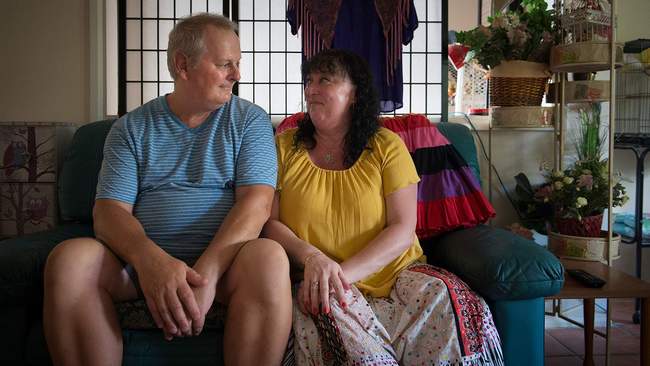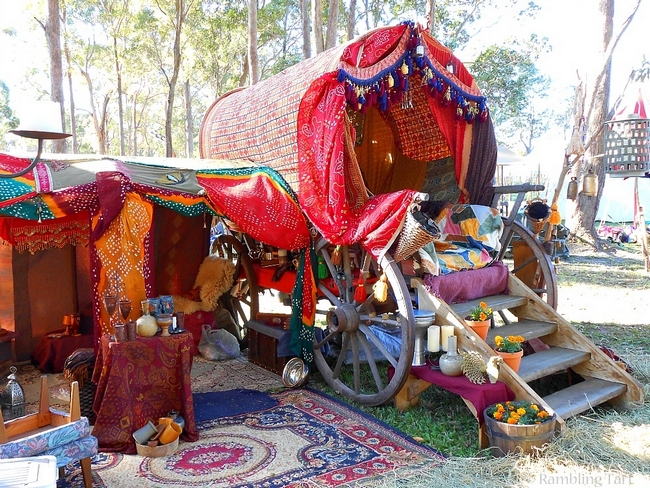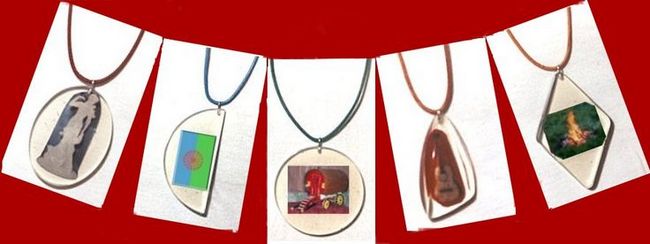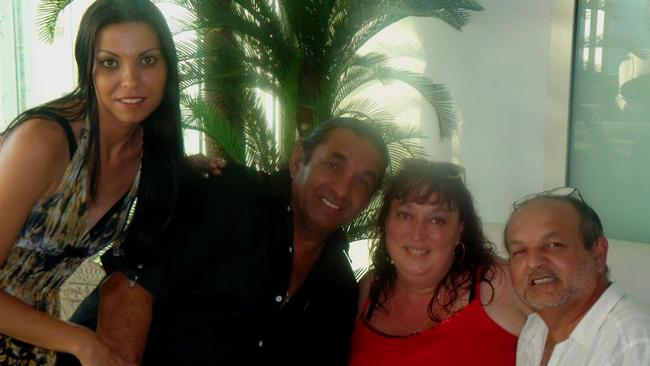Publications
Roma Live Library of Australia. The Story of Yvonne & David Slee
Today we present the story by Mandy Sayer, who attended the Australian Roma. And that’s what she tells us.
Stereotypes have followed Australia’s Romani “Gypsies” since the First Fleet. But step inside their culture, music and travel stories. You might even be inspired to hit the road.
“Why couldn’t you marry an Australian girl?” The story of Yvonne & David Slee
When I meet Yvonne Slee, she greets me in the open door of her south Brisbane home, takes me in her arms and kisses me on the cheek. She’s dressed in a bright red, halter neck dress, her dark hair pulled back in a ponytail. She ushers me into a neat, clean home, and introduces me to her husband Dave, a grinning, blue-eyed man with a strong Aussie accent.
In the living room, I’m greeted by a verbose parrot in a cage and an excited dog. We sit at their dining room table and uncork a bottle of red. Yvonne and I have been corresponding for about a year, but this is the first time we’ve met in person. As Dave attends to cooking lunch in the adjoining kitchen, she begins to tell me about her life.
“Not many people know this,” she says in her soft, almost musical voice, “But after the Jews, Romanies were the most targeted ethnic group by the Nazi regime.”
Born in Germany in 1969, Yvonne was partly raised by her Gypsy grandmother, Elsa, who told her many stories about the Romani, including the persecution her family, and the Roma in general, suffered during both world wars. Yvonne’s uncle and grandfather were two of 1.5 million European Gypsies removed from their homes during the Second World War and gassed to death. Shocked by Elsa’s stories, Yvonne has since become an activist, in an attempt to educate others about the traditions of her people while dispelling myths, stereotypes and cliches about the Roma that have endured for more than 1000 years.
At age 18, shortly after her grandmother died, she moved to London and worked as an au pair, where she met Dave, who was travelling back from Africa. In 1986, they married and relocated to Australia, where they lived on the Gold Coast and began a family. As a child growing up in the 1960s, Dave had lived in nearby Redcliffe and marvelled at the Gypsies who would camp near his home, trying to obtain seasonal work on prawn trawlers.
“They had big 1950s silver caravans, big American Cadillacs and big, black moustaches,” he recalls fondly. “How did your parents react,” I ask, “when you married Yvonne?” Dave grins and begins serving plates of goulash, a traditional Gypsy recipe from Hungary that the couple prepared earlier. “It wasn’t so much that she was a Rom – it was that she was from another country.” He makes a face and shakes his head: “Why couldn’t you marry an Australian girl?” “They didn’t want a dark person in the family!” Yvonne adds.
We begin to eat. The goulash is lightly spiced with herbs and paprika. It tastes delicious with the wine. I remark that they should open a restaurant and serve Gypsy food. Dave and Yvonne trade looks and smile. Yvonne shakes her head. “We already did that,” she says. “It was a disaster!”
She tells me that in 2006, after the birth of their third child, the family packed up and moved to Melbourne. They found premises on Bridge Road, which they painted and decorated with Romani symbols and flags. A small store was set up in one corner, selling Romani literature, trinkets, CDs, and jewellery. They employed two Macedonian Gypsy musicians to perform there twice a month. Yvonne cooked authentic Romani food: goulash, sarmi (cabbage rolls), pasvare (ribs cooked in a spicy broth) and Gypsy cevapcici (spiced mini-sausages), along with soups and salads.
Initially, the public was interested. But it wasn’t long before business dropped off, amid suspicion and mistrust of Yvonne’s ethnic background. Some pedestrians would stop and stare through the front window, before walking past the open door. Others would make a beeline to the kitchen, demanding to know the ingredients of Yvonne’s various dishes, before turning on their heels and leaving. “It was all too much for me to take,” says Yvonne, shaking her head. “One man announced that he wouldn’t eat in a restaurant run by Gypsies because he didn’t trust what we put in the food!”
They sold all their furniture and restaurant equipment. With only $2000 left in their pockets, the family left Melbourne in a van, towing a trailer, bound for Adelaide. They’d heard that there was a Romani school in that city and hoped to find a more supportive and cohesive community of Roma. After a two-day drive, the Slees pulled up at a caravan park with a flashing “Vacancy” sign, but when the manager glimpsed their trailer packed with furniture and boxes, he muttered “Gypsies” and refused to allow them to stay the night. Not only did he turn them away, he rang up caravan parks further along the highway and warned them about “the Gypsies” who were about to arrive.
The Slees were repeatedly turned away, in spite of more signs indicating vacancies. They decided to drive into the Adelaide Hills and found a small park that allowed them to camp. At the Romani school, they discovered a hall with a stage filled with musical instruments, a computer area with desks, one wall lined with books, and a gymnastics room. Yvonne and Dave enrolled their eldest son, Tim, so he could learn Romani language, music, dance, and history – as well as a traditional (Anglo-Saxon) curriculum of mathematics and English.
For centuries, both in Australia and overseas, it has been difficult for travelling Romani families (who move regularly due to seasonal work) to educate their children in government-run schools – which is why generations remained illiterate, reinforcing their status as outsiders, limiting job prospects and deepening their dependence on oral storytelling and history, rather than written versions.Yvonne is keenly aware of this dichotomy and has always wanted her children to be educated in both the Rom and the Gadje (non-Rom) way of life. “Gadje taunt our kids if they don’t know how to read and write,” she says, “so our kids must learn in public schools. If they are educated, then it will be easier for them to teach future generations about our culture.”
Six months later, Dave was offered a job in Cairns and the family packed up the trailer once more, bound for Far North Queensland. Dave, in fact, has adapted to Romani culture with both pleasure and ease. As a mechanic, his profession allows him to pick up work wherever the family travels.
In 2007, the Slees approached the director of the Museum of Tropical Queensland and asked to mount an exhibit on the 1000-year-old history of the Roma, including forced exile from India in the 9th century, migrations across Europe and enslavement in Romania for 800 years. Dave discovered local newspaper articles from 1900 about Gypsy bands performing in Cairns, along with vintage photos of Romani men working the cane fields. Examples of Romani food, music, ornaments, artefacts and a mannequin dressed in traditional Gypsy clothes complemented the exhibit.
After exhibiting material about the history of Romanis, the Slee family received an invitation from the Romani community of Perth to join them in Western Australia. The group was rumoured to be large and active. Yvonne, as much as she loved living in Queensland, was keen to live amongst her own people and speak her own language.
Upon arrival , the Slees discovered that the majority of Perth’s Roma community had emigrated from Macedonia, beginning in the 1960s, and was part of the same extended family. There, Yvonne and Dave attended Romani male initiation ceremonies in private homes, dances featuring Romani music and food, and appeared regularly on a weekly Romani radio program.
After 18 months in Perth, the family moved to Coffs Harbour in NSW, then on to south Brisbane, searching for a less expensive way of life. Now that Yvonne and Dave are getting older, they’re planning what they hope will be the final part of their journey: to buy a block of land in Mackay, build a log cabin for themselves and make the property a permanent site for several caravans to house their children and guests.
Source http://www.sbs.com.au/topics/life/feature/romani-road-australias-gypsy-culture




